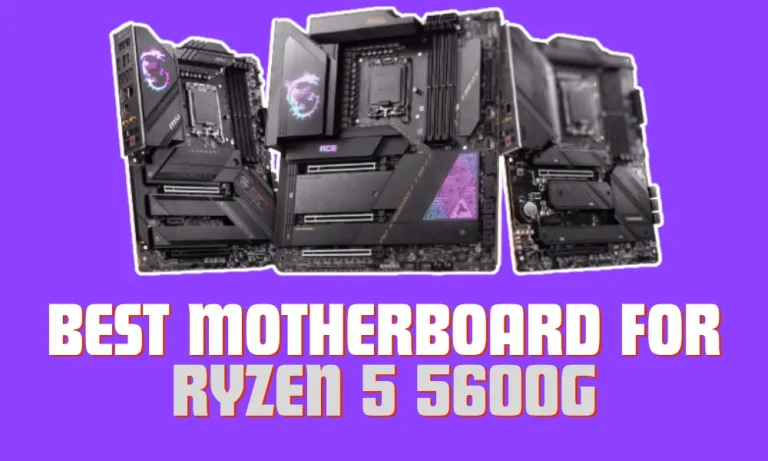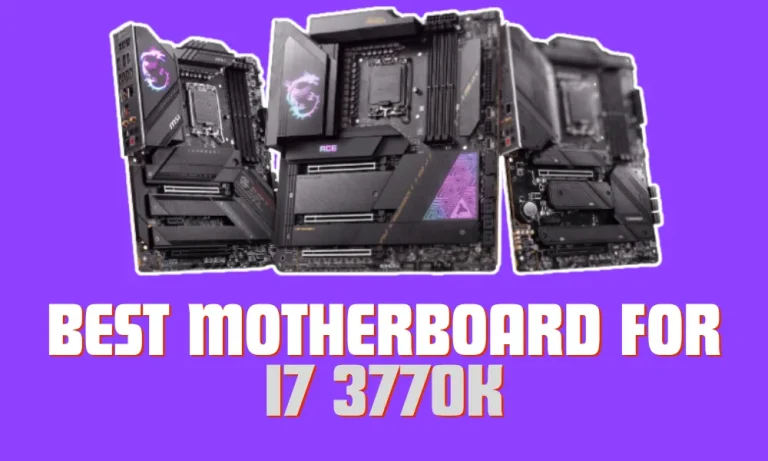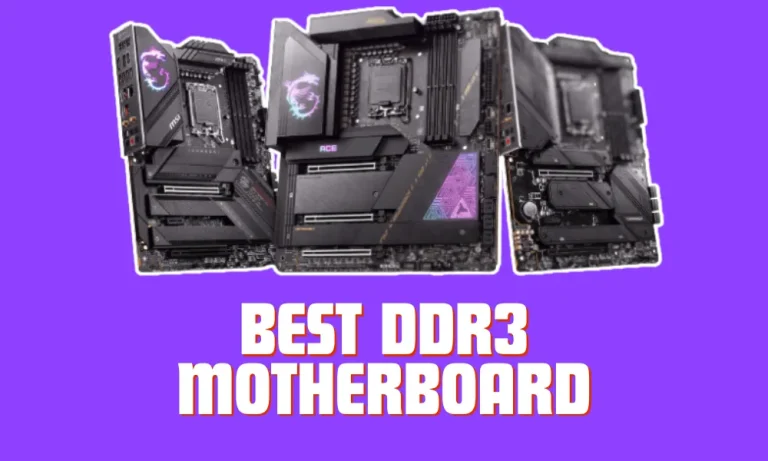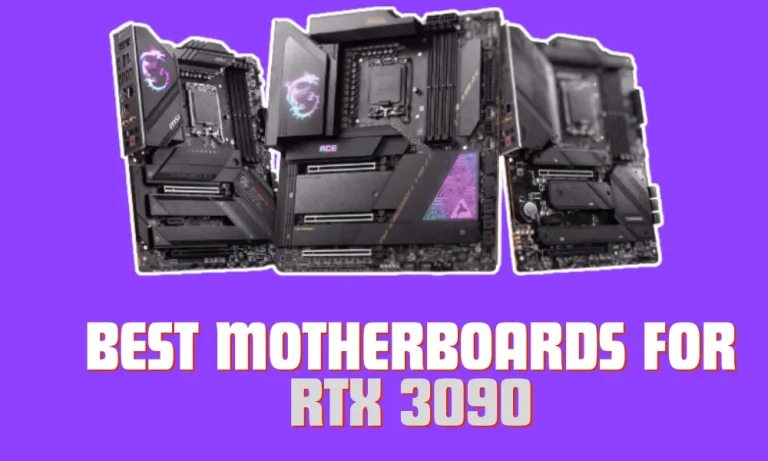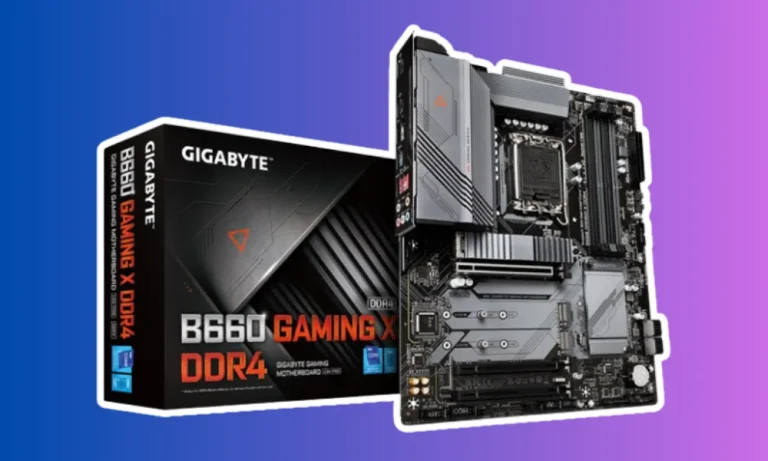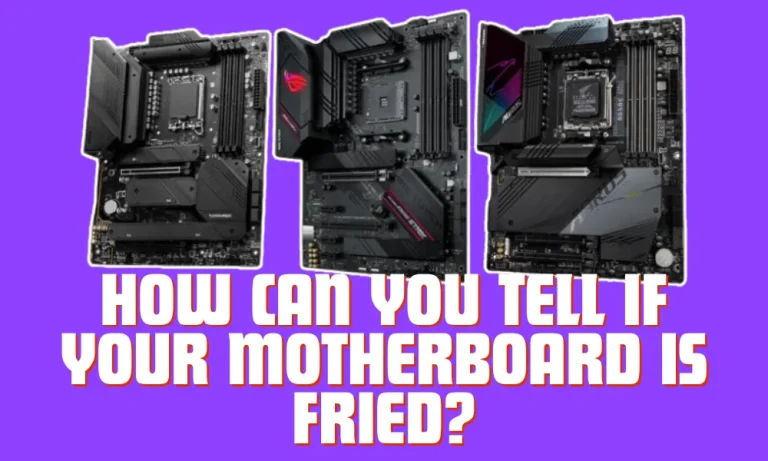Do Motherboards Have DisplayPorts?
Are you wondering if modern motherboards have DisplayPorts? Well, you’ve come to the right place! In this blog post, we’ll delve into the world of display connectivity and explore whether motherboards come equipped with the versatile DisplayPort technology.
Get ready to unravel the mysteries of motherboard display options in a simple and engaging manner.
Types of Display Connectors on Motherboards
When it comes to connecting displays to your motherboard, you’ll encounter various types of display connectors. Understanding the differences between these connectors is essential for choosing the right one for your needs.
Common Types of Display Connectors on Motherboards
- DisplayPort (DP): DisplayPort is a versatile digital display connector that supports high resolutions and high refresh rates. It’s the go-to choice for modern displays and is widely used in both computers and graphics cards. DisplayPort offers excellent video and audio quality, making it ideal for gaming, content creation, and multimedia purposes.
- HDMI (High-Definition Multimedia Interface): HDMI is another popular digital display connector found on motherboards. It’s commonly used for connecting TVs, monitors, and other multimedia devices. HDMI supports high-definition video and audio signals, offering a seamless multimedia experience. It’s widely compatible and supports features like ARC (Audio Return Channel) and CEC (Consumer Electronics Control).
- VGA (Video Graphics Array): VGA is an older analog video connector that has been around for decades. While it has become less common in modern motherboards, some older systems may still have VGA ports. VGA supports lower resolutions and doesn’t carry audio signals. It’s primarily used for connecting older monitors and projectors.
Differences Between DisplayPorts, HDMI Ports, and VGA Ports
- Resolution and Refresh Rates: DisplayPort and HDMI support high resolutions and refresh rates, while VGA is limited to lower resolutions and refresh rates.
- Digital vs. Analog: DisplayPort and HDMI are digital connectors, offering higher quality and clarity, while VGA is an analog connector, which can result in lower image quality.
- Audio Support: DisplayPort and HDMI carry audio signals, eliminating the need for separate audio cables, while VGA requires a separate audio connection.
- Compatibility: DisplayPort and HDMI are widely compatible with modern displays, while VGA may require adapters for connection to newer displays.
DisplayPorts on Dedicated Graphics Cards
When it comes to dedicated graphics cards, DisplayPorts play a crucial role in connecting your monitor or other display devices. These ports offer a range of benefits and provide high-quality video and audio output.
The Presence of DisplayPorts on Dedicated Graphics Cards
Dedicated graphics cards are designed specifically for handling graphics-intensive tasks, such as gaming, video editing, and 3D rendering.
These cards often come equipped with multiple DisplayPorts, along with other display connectors like HDMI and DVI. DisplayPorts have become increasingly common on graphics cards due to their superior performance and versatility.
Connecting DisplayPorts to the Motherboard
Graphics cards, including dedicated ones, are physically connected to the motherboard through a PCIe (Peripheral Component Interconnect Express) slot.
These slots provide a high-speed connection between the graphics card and the motherboard, allowing for fast data transfer and communication.
To connect the DisplayPorts on the graphics card to the motherboard, the graphics card’s PCIe slot aligns with and inserts into the corresponding slot on the motherboard.
This secure connection ensures that the graphics card can communicate with the motherboard and other system components effectively.
Once the graphics card is connected to the motherboard, the DisplayPorts on the graphics card can be used to connect to external displays. The DisplayPorts transmit both video and audio signals, providing a seamless multimedia experience.
You can connect your monitor, TV, or projector to the DisplayPort on the graphics card using a DisplayPort cable, enabling high-resolution visuals and immersive sound.
Integrated Graphics and DisplayPorts
When it comes to motherboards, some come with integrated graphics capabilities, meaning they have built-in graphics processing units (GPUs) that can handle basic display tasks. These motherboards often feature DisplayPorts alongside other display connectors.
The Presence of DisplayPorts on Motherboards with Integrated Graphics
Integrated graphics are commonly found on entry-level or budget-friendly motherboards. These motherboards have a GPU integrated into the motherboard chipset, eliminating the need for a separate graphics card.
Alongside other display connectors like HDMI, DVI, or VGA, DisplayPorts are often included to provide additional display options.
How Integrated Graphics and DisplayPorts Work Together
When using integrated graphics, the DisplayPorts on the motherboard act as the primary means of connecting external displays.
Integrated graphics utilize the system’s main memory for graphics processing, allowing for basic display tasks and everyday computing needs.
To connect a display to the motherboard’s DisplayPort, you’ll need a compatible DisplayPort cable. Once connected, the integrated graphics processor will handle the rendering of visuals and transmit the video signals through the DisplayPort to the connected display.
Integrated graphics and DisplayPorts work together to provide a convenient and cost-effective solution for users who don’t require highly demanding graphics performance.
They are suitable for tasks like web browsing, document editing, and multimedia playback.
However, it’s important to note that integrated graphics may not be powerful enough for graphics-intensive tasks like gaming or video editing, which may require a dedicated graphics card.
DisplayPort Versions and Capabilities
DisplayPort is a display interface standard that has evolved over time, offering various versions with improved capabilities. Each version brings new features and enhancements to provide better video and audio transmission.
DisplayPort Versions
- DisplayPort 1.1: This was the first version of DisplayPort introduced in 2006. It supports a maximum resolution of 2560×1600 pixels and a refresh rate of 60 Hz. DisplayPort 1.1 also introduced support for HDCP (High-bandwidth Digital Content Protection) for secure content playback.
- DisplayPort 1.2: Released in 2009, DisplayPort 1.2 brought significant improvements. It increased the maximum resolution to 3840×2160 pixels (4K) at 60 Hz or 2560×1600 pixels at 120 Hz. DisplayPort 1.2 also introduced Multi-Stream Transport (MST) technology, enabling the daisy-chaining of multiple displays from a single DisplayPort output.
- DisplayPort 1.3: Introduced in 2014, DisplayPort 1.3 further improved resolution and refresh rate capabilities. It supports resolutions up to 7680×4320 pixels (8K) at 60 Hz or 3840×2160 pixels at 120 Hz. DisplayPort 1.3 also introduced support for High Dynamic Range (HDR) for enhanced color and contrast.
- DisplayPort 1.4: Released in 2016, DisplayPort 1.4 expanded the capabilities of the interface. It supports resolutions up to 7680×4320 pixels at 60 Hz with HDR, or 3840×2160 pixels at 240 Hz without HDR. DisplayPort 1.4 also introduced Display Stream Compression (DSC) for efficient bandwidth utilization.
Capabilities and Features
DisplayPort versions offer various capabilities and features to enhance the display experience. These include:
- Higher resolutions and refresh rates for sharper and smoother visuals.
- Support for multiple displays through daisy-chaining or MST.
- HDR support for improved color and contrast.
- Adaptive Sync technology for tear-free gaming and smoother video playback.
- DisplayPort Audio for high-quality audio transmission alongside video.
- Improved bandwidth efficiency with DSC.
Benefits of DisplayPorts on Motherboards
DisplayPorts on motherboards offer a range of advantages, making them a valuable feature for users seeking versatile display connectivity options.
Advantages of DisplayPorts on Motherboards
- High-Resolution Display Support: One of the key benefits of DisplayPorts is their ability to support high-resolution displays. DisplayPort connections can handle resolutions up to 8K, providing crisp and detailed visuals for tasks like content creation, video editing, and gaming. With DisplayPorts on your motherboard, you can enjoy the latest high-resolution displays without the need for additional graphics cards.
- Multiple Monitor Setup: DisplayPorts excel in supporting multiple monitors, allowing users to create expansive workspaces or immersive gaming setups. By leveraging technologies like Multi-Stream Transport (MST), DisplayPorts enable daisy-chaining of multiple displays from a single port. This eliminates the hassle of connecting each monitor separately and simplifies cable management.
- Flexible Display Options: DisplayPorts offer versatility when it comes to connecting different types of displays. They support not only traditional monitors but also a variety of adapters and converters to connect to HDMI, DVI, or VGA displays. This flexibility ensures compatibility with a wide range of display devices, making DisplayPorts a convenient choice for different setups.
- High Bandwidth and Refresh Rate: DisplayPorts provide ample bandwidth for transmitting high-quality video and audio signals. They support higher refresh rates, resulting in smoother and more responsive visuals, especially in gaming or fast-paced content. DisplayPorts also offer superior color depth and accuracy, enhancing the overall viewing experience.
FAQs about Motherboards with DisplayPorts
Do all motherboards have DisplayPorts?
No, not all motherboards have DisplayPorts. The presence of DisplayPorts depends on the specific model and brand of the motherboard. It’s important to check the specifications of the motherboard before purchasing to ensure it has the desired display connectivity options.
Can I use a DisplayPort on the motherboard without a dedicated graphics card?
Yes, you can use a DisplayPort on the motherboard without a dedicated graphics card. Many modern motherboards come with integrated graphics capabilities, allowing you to connect displays directly to the motherboard’s DisplayPort. However, the display capabilities and performance may vary depending on the motherboard’s integrated graphics.
Can I connect multiple monitors to a motherboard with DisplayPort?
Yes, you can connect multiple monitors to a motherboard with DisplayPort. DisplayPorts support multi-monitor setups, often through technologies like Multi-Stream Transport (MST) that allow daisy-chaining of displays. However, the number of monitors supported may vary depending on the specific motherboard and its graphics capabilities.
Can I connect a DisplayPort monitor to a motherboard with only HDMI ports?
Yes, you can connect a DisplayPort monitor to a motherboard with only HDMI ports. Adapters or converters are available that can convert the DisplayPort signal to HDMI, allowing you to connect the monitor to the HDMI port on the motherboard. However, it’s important to ensure compatibility and check the maximum supported resolution and refresh rate.
What should I do if my motherboard’s DisplayPort is not working?
If your motherboard’s DisplayPort is not working, there are a few troubleshooting steps you can try. Firstly, ensure that the DisplayPort cable is securely connected to both the motherboard and the monitor. Secondly, check if the motherboard’s firmware and graphics drivers are up to date. If the issue persists, you can try connecting a different monitor or using a different DisplayPort cable to rule out any hardware-related problems.
Conclusion
Motherboards can indeed have DisplayPorts, which offer numerous advantages for display connectivity. With DisplayPorts on your motherboard, you can enjoy high-resolution displays, support for multiple monitors, and flexible display options. This feature enhances your visual experience, whether you’re working, gaming, or enjoying multimedia content.

